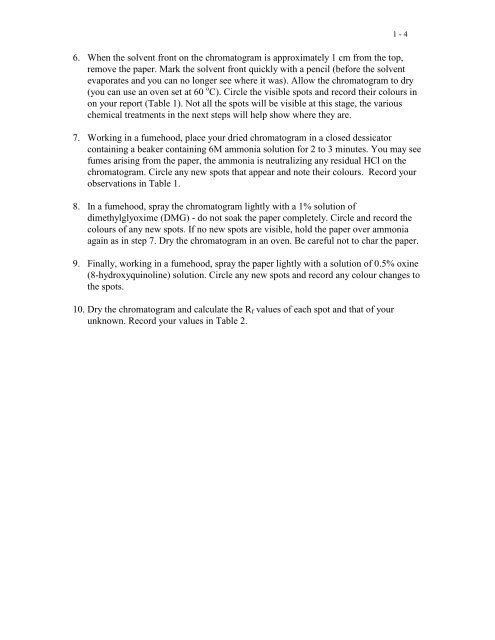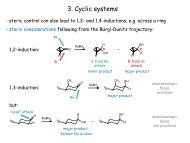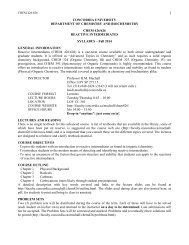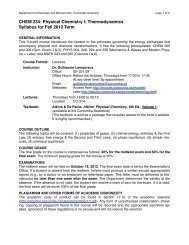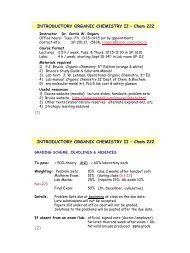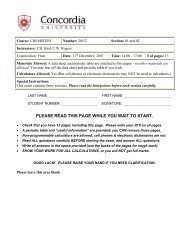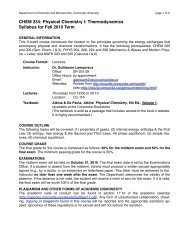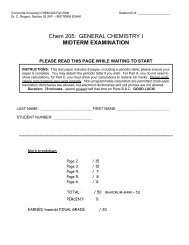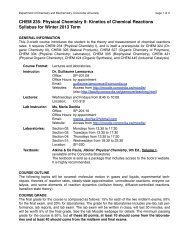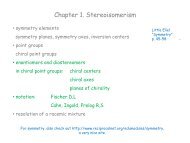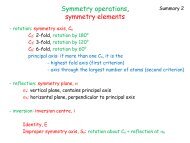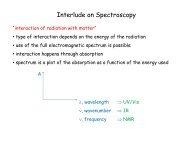Paper Chromatography Separation of Inorganic Cations
Paper Chromatography Separation of Inorganic Cations
Paper Chromatography Separation of Inorganic Cations
You also want an ePaper? Increase the reach of your titles
YUMPU automatically turns print PDFs into web optimized ePapers that Google loves.
1 - 46. When the solvent front on the chromatogram is approximately 1 cm from the top,remove the paper. Mark the solvent front quickly with a pencil (before the solventevaporates and you can no longer see where it was). Allow the chromatogram to dry(you can use an oven set at 60 o C). Circle the visible spots and record their colours inon your report (Table 1). Not all the spots will be visible at this stage, the variouschemical treatments in the next steps will help show where they are.7. Working in a fumehood, place your dried chromatogram in a closed dessicatorcontaining a beaker containing 6M ammonia solution for 2 to 3 minutes. You may seefumes arising from the paper, the ammonia is neutralizing any residual HCl on thechromatogram. Circle any new spots that appear and note their colours. Record yourobservations in Table 1.8. In a fumehood, spray the chromatogram lightly with a 1% solution <strong>of</strong>dimethylglyoxime (DMG) - do not soak the paper completely. Circle and record thecolours <strong>of</strong> any new spots. If no new spots are visible, hold the paper over ammoniaagain as in step 7. Dry the chromatogram in an oven. Be careful not to char the paper.9. Finally, working in a fumehood, spray the paper lightly with a solution <strong>of</strong> 0.5% oxine(8-hydroxyquinoline) solution. Circle any new spots and record any colour changes tothe spots.10. Dry the chromatogram and calculate the R f values <strong>of</strong> each spot and that <strong>of</strong> yourunknown. Record your values in Table 2.


